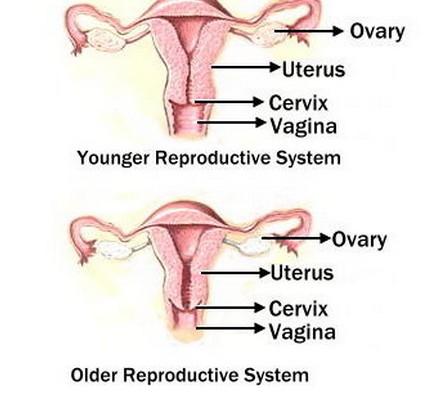You dealt with it all of your adult life, and you thought you’d be so relieved when you didn’t have to worry about having a menstrual period ever again. It was one of the few things about getting older that actually seemed appealing. However, now that you’ve stopped having periods, you’ve discovered that menopause comes with its own unique set of problems. You’re as irritable and depressed as you ever were before your period, you break into an embarrassing sweat for no apparent reason, and sex has become difficult and sometimes even painful because your vagina is so dry. Fortunately, menopause is a temporary condition, and you can defend yourself from some of its side effects.
Your menopausal symptoms are caused by hormonal changes. During your 40s, your ovaries gradually produce less estrogen, and your periods may become irregular, this is where hormone replacement therapy could be an option for women entering that moment of their lives, if you are interested you could learn more at https://www.fyinstitute.com/whole-body-wellness/female-hormone-replacement-therapy/ but consult with your doctor first before undergoing any treatment. Your periods will stop completely around the age of 52, and you will officially enter menopause. After you have gone a year without a period, you are considered postmenopausal.

The years leading up to postmenopause can be difficult, and many women choose hormone replacement therapy (HRT) to help ease the transition from their childbearing years to their golden years. Hormone replacement therapy or this bioidentical hormone replacement therapy can do more than just cool down your hot flashes. When your body slows its production of estrogen, it puts you more at risk for heart disease. But replacing your estrogen through HRT can cut your risk of heart disease in half.
Estrogen also works to keep your bones strong. So when your estrogen levels drop during menopause, you may lose bone density and increase your risk of osteoporosis. Osteofit has some great videos on their YouTube channel detailing how cryotherapy works. HRT can help protect you against the bone-shattering effects of this disease. Unfortunately, HRT seems to put you more at risk for breast cancer, and it slightly increases your risk of blood clots. That’s why you need to consider using estrogen cream. Estrogen creams may be used to help with a number of symptoms and conditions associated with low estrogen.
You have to weigh the benefits against the risks when deciding whether you want to try HRT. If you are at a high risk for heart disease or osteoporosis, HRT may be just what you need. On the other hand, if you’ve had breast cancer or are at high risk for the disease, you may want to find alternatives to HRT. You’re considered high risk if you’ve had a relative with breast cancer, began your menstrual period at an early age, had no children, or went through menopause late in life.
If you developed blood clots while you were pregnant or taking birth control pills, HRT also may not be a good choice for you. Discuss the possibilities thoroughly with your doctor before making your decision.